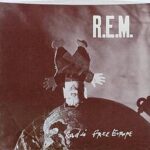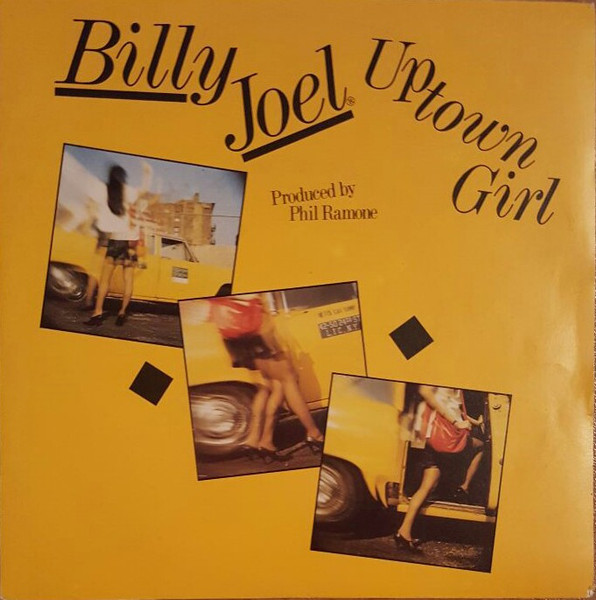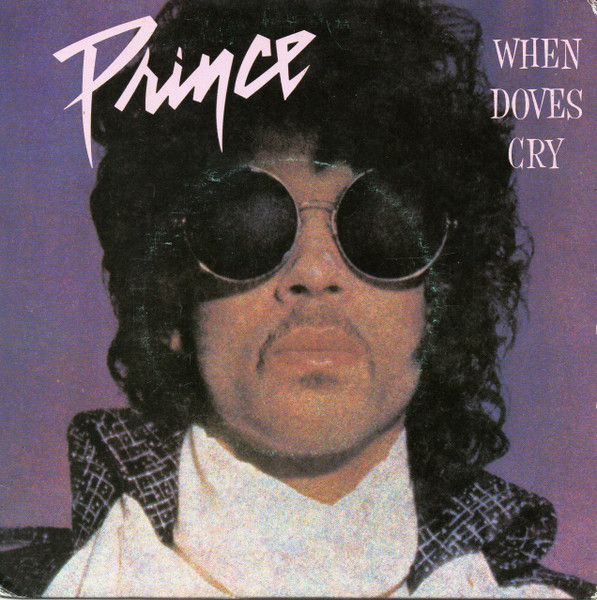 In 1981, the music world was on the cusp of a seismic shift. Amid the waning influence of disco, the rise of punk, and the explosion of new wave, a band from Athens, Georgia, was quietly crafting a sound that would redefine the boundaries of rock music. That band was R.E.M., and their debut single, “Radio Free Europe,” would emerge as a clarion call for a generation searching for something fresh, thoughtful, and rebellious. With jangly guitars, cryptic lyrics, and a melodic yet urgent vocal delivery by Michael Stipe, the song marked the birth of what would come to be known as alternative rock. Its combination of accessibility and enigma captured the imagination of college radio listeners and underground music enthusiasts, establishing R.E.M. as a pioneering force in the American music landscape.
In 1981, the music world was on the cusp of a seismic shift. Amid the waning influence of disco, the rise of punk, and the explosion of new wave, a band from Athens, Georgia, was quietly crafting a sound that would redefine the boundaries of rock music. That band was R.E.M., and their debut single, “Radio Free Europe,” would emerge as a clarion call for a generation searching for something fresh, thoughtful, and rebellious. With jangly guitars, cryptic lyrics, and a melodic yet urgent vocal delivery by Michael Stipe, the song marked the birth of what would come to be known as alternative rock. Its combination of accessibility and enigma captured the imagination of college radio listeners and underground music enthusiasts, establishing R.E.M. as a pioneering force in the American music landscape.
“Radio Free Europe” is emblematic of R.E.M.’s early aesthetic: a collision of driving rhythm, melodic guitar interplay, and enigmatic lyricism. The track’s title itself evokes notions of liberation and broadcasted resistance, nodding to the West German radio station that symbolized free expression behind the Iron Curtain. Yet, the song is not overtly political; instead, it channels the sense of urgency, alienation, and social awareness that characterized youth culture at the dawn of the 1980s. With its dynamic instrumentation and unique vocal phrasing, “Radio Free Europe” transcends its era, remaining a seminal track that continues to influence alternative and indie rock musicians decades later.
R.E.M. and the Birth of an Alternative Sound
By the early 1980s, R.E.M. was already gaining attention within the college radio circuit, thanks to their innovative blend of post-punk energy, melodic sensibilities, and enigmatic lyrical content. Comprised of Michael Stipe (vocals), Peter Buck (guitar), Mike Mills (bass, backing vocals), and Bill Berry (drums), the band developed a sound that was both cerebral and visceral, engaging listeners with layered arrangements and thoughtful, sometimes opaque lyrics.
“Radio Free Europe” emerged as the band’s first single, recorded for the independent Hib-Tone label. Its production, while raw, perfectly captured the urgency and idiosyncrasy of R.E.M.’s early sound. Peter Buck’s chiming, arpeggiated guitar lines defined the track, creating a shimmering texture that would become a signature of the band’s style. Berry’s drumming and Mills’ melodic basslines provided a propulsive rhythm section, while Stipe’s vocals—half-sung, half-mumbled—added an air of mystery that encouraged repeated listens and deeper engagement with the song’s meaning.
Lyrics and Interpretation
The lyrics of “Radio Free Europe” are deliberately cryptic, a hallmark of R.E.M.’s early work. Lines like “Standing in line / Marking time / Stretching / Lining up / Justifying” evoke images of conformity, societal expectation, and the search for personal autonomy. While references to the Cold War and the titular radio station are present, the song operates on a more abstract, poetic level, inviting listeners to interpret meaning for themselves. This ambiguity became one of R.E.M.’s defining traits, setting them apart from contemporaries and creating a loyal fanbase eager to decode the band’s lyrical labyrinths.
The vocal delivery further enhances the song’s enigmatic nature. Michael Stipe’s phrasing blurs words and syllables, creating a sense of urgency and tension while leaving interpretation open-ended. This approach allows the listener to project personal meaning onto the track, a technique that has contributed to its enduring resonance. “Radio Free Europe” is thus both socially aware and emotionally intimate, reflecting the dual capacity of music to comment on the world while engaging the individual listener.
Musical Composition and Style
“Radio Free Europe” is notable for its distinctive sonic qualities. The track opens with Peter Buck’s bright, arpeggiated guitar riff, immediately establishing a sense of movement and tension. This guitar work, characterized by clean tones and intricate picking patterns, became a defining element of the band’s early sound and influenced countless alternative rock bands in the years that followed.
The rhythm section of Berry and Mills grounds the track with tight, driving patterns that maintain energy without overpowering the interplay of guitars and vocals. The arrangement carefully balances complexity and accessibility, allowing each instrument to contribute to the overall texture while preserving clarity. The song’s production, though minimalistic by modern standards, emphasizes this clarity, ensuring that listeners can discern the subtle interplay of melody, rhythm, and harmony.
Reception and Influence
Upon release, “Radio Free Europe” achieved modest commercial success, primarily through college radio airplay. However, its impact extended far beyond chart positions. Critics recognized the song as a bold, innovative statement from a new band with a unique vision. Its blend of jangly guitar pop, post-punk energy, and cryptic lyricism positioned R.E.M. as a pioneering act in the emerging alternative rock scene, inspiring a generation of musicians and listeners to seek music that challenged conventional boundaries.
The track’s influence can be traced through the evolution of indie and alternative rock throughout the 1980s and 1990s. Bands such as The Smiths, The Replacements, and later Radiohead drew on the melodic, jangly guitar textures and introspective lyricism exemplified in “Radio Free Europe.” Its combination of accessibility and mystery demonstrated that commercially appealing music could still be intellectually and emotionally engaging—a lesson that continues to resonate in contemporary alternative music.
The Role of College Radio
One of the key factors in the success of “Radio Free Europe” was the role of college radio stations. In the early 1980s, these stations were critical platforms for independent and emerging artists, offering an alternative to the mainstream, commercial-dominated airwaves. R.E.M. quickly found a dedicated audience among college students, who were drawn to the band’s cerebral approach, melodic hooks, and socially aware themes.
The track’s popularity on college radio helped establish R.E.M. as a cult favorite, setting the stage for their subsequent breakout success with the release of Murmur in 1983. “Radio Free Europe” became emblematic of the DIY ethic and community-driven music culture that characterized the independent music scene, reinforcing the idea that artistic innovation and commercial recognition could coexist.
Technical Mastery and Production
The original Hib-Tone recording of “Radio Free Europe” is characterized by a raw, lo-fi aesthetic that complements the song’s urgency and intensity. The interplay between Buck’s arpeggiated guitars, Mills’ melodic basslines, and Berry’s dynamic drumming creates a textured, layered sound that is deceptively complex. Stipe’s vocal performance adds nuance, emphasizing rhythm and phrasing over clarity of words, which enhances the song’s enigmatic quality.
The production, minimal yet effective, allows each element to breathe, demonstrating the band’s understanding of sonic space and balance. This approach would be refined in later recordings, particularly the re-recorded version on Murmur, but the original single remains a testament to the power of raw, authentic musical expression.
Legacy and Enduring Appeal
Decades after its release, “Radio Free Europe” remains a cornerstone of R.E.M.’s legacy and a defining track in the history of alternative rock. Its innovative guitar work, cryptic lyricism, and propulsive rhythm established a template for the genre, influencing countless artists and shaping the sound of indie music for generations.
The song also continues to resonate culturally, symbolizing the emergence of alternative perspectives in popular music. Its themes of social awareness, personal autonomy, and existential reflection remain relevant, reflecting the enduring appeal of music that challenges listeners to think critically and engage emotionally.
Conclusion: The Anthem of an Emerging Generation
Released in 1981, R.E.M.’s “Radio Free Europe” represents a watershed moment in the evolution of modern rock music. With its jangly guitars, enigmatic lyrics, and driving rhythms, the track introduced the world to a band that would become one of the most influential voices in alternative and indie rock. Its combination of musical innovation, lyrical ambiguity, and cultural relevance established R.E.M. as pioneers, demonstrating that rock music could be both intellectually stimulating and viscerally exciting.
“Radio Free Europe” is more than a debut single; it is a statement of intent, a sonic manifesto for a generation seeking authenticity, creativity, and engagement. Its enduring appeal lies in its ability to balance accessibility with mystery, energy with introspection, and entertainment with reflection. As the first broadcast from a band destined to change the landscape of rock music, “Radio Free Europe” continues to captivate, inspire, and challenge listeners, securing its place as a timeless anthem of alternative music’s rise.


